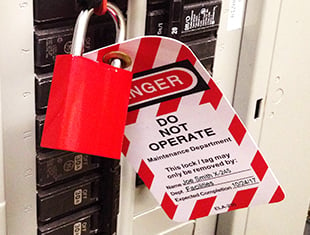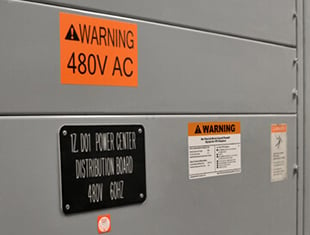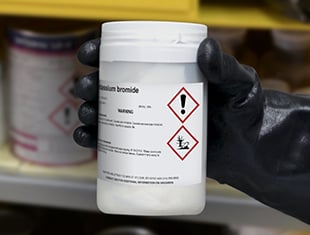JHA for Facility Safety & Managing Hazards
03
February,
2023
3 MINUTE READ
Webinar | JHA for Facility Safety & Workplace Hazards
JHA for Facility Safety & Managing Hazards
Reduce unsafe habits with a job hazard analysis
- Break down job tasks to identify hazards
- Eliminate and control hazards by applying the Hierarchy of Controls
- Reinforce safety with visual communication
 22:40 mins
22:40 mins
Presented By

Brian McFadden
Technical Writer
Compliance Specialist
Related Resources
Transcript
Webinar Preview
Contents of the JHA for Facility Safety & Managing Hazards Webinar:
- Top Safety Issues
- OSHA's Top Ten
- Identifying Hazards with JHA
- What Tasks Need a JHA?
- Describe the Task
- Identify the Hazards
- Choose Controls to Protect Workers
- Addressing Hazards with the Hierarchy of Controls
- Implementing Visual Solutions
- Clear and Standardized Signage
- Signal Words and Sign Categories
- Message Content
- Readability
- Moving Forward
Excerpt from the JHA for Facility Safety & Managing Hazards Webinar transcript:
Identifying Hazards with JHA
One of the best tools for spotting and resolving safety problems in a workplace is the Job Hazard Analysis, or JHA. This is a detailed description of the work that needs to be done and the hazards that could be involved in that work. Ideally, a JHA should be completed before any work begins; if you're coming into an existing facility, you may need to track down older documentation.
Often, one person can create a JHA with input from others, but they can also be created as a team effort. However you decide to do your JHAs, there's a simple four-part process to follow:
1. choose a task,
2. describe it in detail,
3. identify the hazards of that task,
4. and choose protective controls that will keep your workers safe.
The result of a JHA is a decision about how to proceed safely, so that result needs to be written down and acted on. The JHA itself doesn't solve the problem - but it will help you find the right solution.
What Tasks Need a JHA?
First, you need to identify which tasks you're going to cover with a JHA. Especially if the process is new to your facility, there will be way too many tasks for you to cover them all at the same time. Prioritize the jobs that involve the highest chances of injury, and work your way down the list as time allows. A good place to start is that OSHA Top Ten list we covered earlier.
The next step is to look at your facility's history. Have any tasks resulted in injuries before? Are some hazards already known, and has anything been done about those hazards?
You'll also need information about what's being done on the ground level - the real work, being done by real people in your workplace. Get input and involvement from your workers. Which tasks seem dangerous to them? Have there been any near-misses? Are there unwritten rules that are followed for safety, even though they aren't part of a formal procedure?
When you finish this process, you should have a list of tasks to analyze. If it's a long list, don't panic - just start with the most serious hazards, and work your way down.
Describe the Task
Each Job Hazard Analysis should focus on a single task, and the first step in the analysis will be to describe that task. This can start very simply, with a name for that task, like "battery testing" or "casing assembly." But don't stop there; the details are important.
. What work is being done?
. Who does this task, where, and when?
. What tools or equipment are involved?
. What are the steps of the task?
Write down all of these details so they can be referred to later. If your description gets so long that it's hard to manage, you may need to split the task into several smaller parts, and do a JHA for each part.
Identify the Hazards
Now that you've covered the "Job" part of the Job Hazard Analysis, the next step is to talk about the "Hazard." What could go wrong, hurting an employee? Again, write down these details.
There are three parts to this description that you'll need to include:
. The potential source of injury or damage, such as a raised work platform or a high-pressure gas system. (Technically, this is the "hazard.")
. An event (or "trigger") that allows the hazard to result in real harm, such as a pressure valve in the gas system blowing out, or a worker falling from the platform.
. The consequences of that event, including the type and seriousness of any injuries or damage. Falling injuries can be very serious, for example - they're the most frequent cause of workplace fatalities.
Be sure to consider any contributing factors. Outdoor work will be affected by weather, for example.
Assign Controls to Protect Workers
At this point, you should have a clear idea of what's being done and how that could lead to injury. Think about the work being done, and the hazards, triggers, and consequences associated with that work. The next step in a JHA is to create and apply controls that reduce the chance of injury.
Whatever controls you decide to implement, you'll want to write down your decisions. Documented steps can then be included in training for your workers, and the effects of those steps can be tracked over time. But first, you need to make effective choices for those controls. Let's talk about that process.
To learn how to use the Job Hazard Analysis (JHA) to manage workplace hazards and keep your facility's workers safe, watch the full webinar on demand now!
RELATED RESOURCES

Electrical Safety with Lockout/Tagout
Webinar | Electrical Safety with Lockout/Tagout Electrical Safety with Lockout/Tagout Protect against ...
Watch Now
Labeling for Arc Flash Hazards
Webinar | Labeling for Arc Flash Hazards Labeling for Arc Flash Hazards Protect yourself and your workers ...
Watch Now
Chemical Risk Assessments
Webinar | Chemical Risk Assessments Chemical Risk Assessments Protect workers from hazardous chemicals in ...
Watch Now.png)


